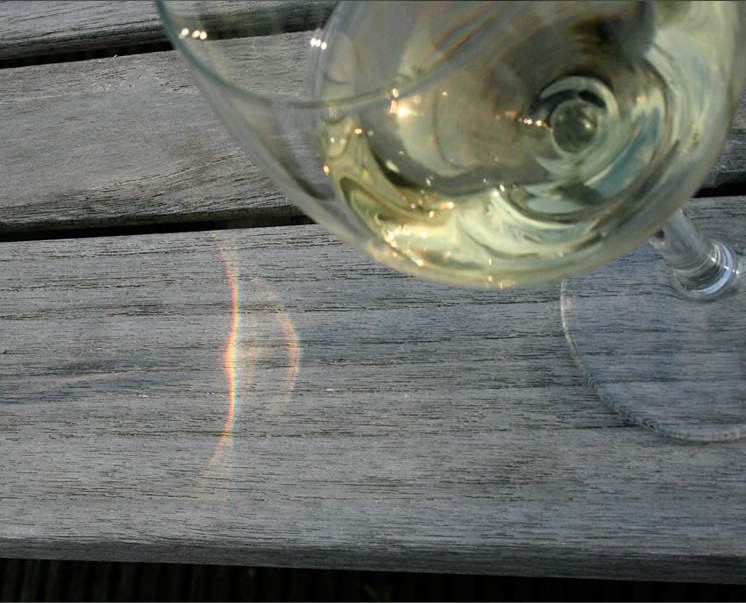Wine Glass Caustics
Wine Glass Caustics: The Dance of Refracted Sunlight
Caustics, those mesmerizing sheets of light that appear in various settings, have long fascinated observers. One such captivating example is the caustics formed by a wine glass. When sunlight passes through the glass, it refracts and creates intricate patterns on the surrounding surfaces. These enchanting caustics can be observed dancing on the bench, shimmering on the bottom of a swimming pool, or even adorning the surface of a cup of coffee.
Caustics are formed when rays of light bunch together, creating spatial discontinuities that reveal fascinating catastrophes in ray behavior. These sheets of light are a result of rays coalescing and denote turning points or angles of minimum deviation in the deflection of light rays. Rainbows, for instance, are a well-known example of caustics, where bunched rays form as light passes through raindrops.
But what exactly causes these captivating caustics? It all comes down to the properties of light and its interaction with different mediums. When sunlight passes through a wine glass, it undergoes refraction, bending as it transitions from air to glass and then back to air again. This bending of light rays creates variations in intensity and concentration, resulting in the formation of caustics.
The intricate patterns of caustics can be seen in various settings, each offering its own unique display. In the case of a wine glass, the caustics appear on the bench where the glass is placed. The undulating surface of a swimming pool can also create caustics as sunlight interacts with the moving water. Next time you enjoy a cup of coffee, take a moment to observe the surface, and you might just catch a glimpse of caustics formed by reflections from the sides of the cup.
Caustics have fascinated scientists and artists alike, inspiring research and creative works. Their complex patterns and mesmerizing movements have been studied in the field of optics, helping us understand the behavior of light and its interaction with different mediums. They have also found their way into various art forms, with artists capturing the beauty and allure of caustics in their works.
Understanding caustics not only provides insights into the behavior of light but also offers practical applications. For example, caustics can be used in the design of optical systems, such as lenses and mirrors, to control the distribution of light. By manipulating the shape and curvature of these optical elements, engineers can shape and direct caustics to achieve desired lighting effects or enhance the efficiency of light collection.
In conclusion, wine glass caustics are a captivating phenomenon that occurs when sunlight passes through a wine glass and refracts, creating intricate patterns of light on surrounding surfaces. These mesmerizing sheets of light, formed by the coalescing of rays, reveal fascinating catastrophes in ray behavior. From rainbows to reflections in coffee cups, caustics can be observed in various settings, adding a touch of enchantment to our everyday experiences. Their study not only deepens our understanding of light but also finds practical applications in optical design. So next time you raise a glass, take a moment to appreciate the dance of refracted sunlight that adorns our world with its ethereal beauty.

Caustics from a wine glass. Seen by Leo Van Hoyweghen
(site) in Belgium. Image ©Leo Van Hoyweghen, shown with permission.
The wine has refracted sunlight to form caustics on the bench. Look for them dancing on the bottom of a swimming pool when formed by the undulating water surface. The surface of coffee often has them, the result of reflections from the sides of the cup.
Caustics are sheets of light formed when rays bunch together, coalesce. They denote spatial discontinuities - catastrophes - in ray behaviour.
Rainbows are caustics, their bunched rays result form a turning point or angle of minimum deviation in the deflection of rays leaving raindrops.
More about caustics here.
Note: this article has been automatically converted from the old site and may not appear as intended. You can find the original article here.
Reference Atmospheric Optics
If you use any of the definitions, information, or data presented on Atmospheric Optics, please copy the link or reference below to properly credit us as the reference source. Thank you!
-
<a href="https://atoptics.co.uk/blog/wine-glass-caustics/">Wine Glass Caustics</a>
-
"Wine Glass Caustics". Atmospheric Optics. Accessed on November 26, 2024. https://atoptics.co.uk/blog/wine-glass-caustics/.
-
"Wine Glass Caustics". Atmospheric Optics, https://atoptics.co.uk/blog/wine-glass-caustics/. Accessed 26 November, 2024
-
Wine Glass Caustics. Atmospheric Optics. Retrieved from https://atoptics.co.uk/blog/wine-glass-caustics/.